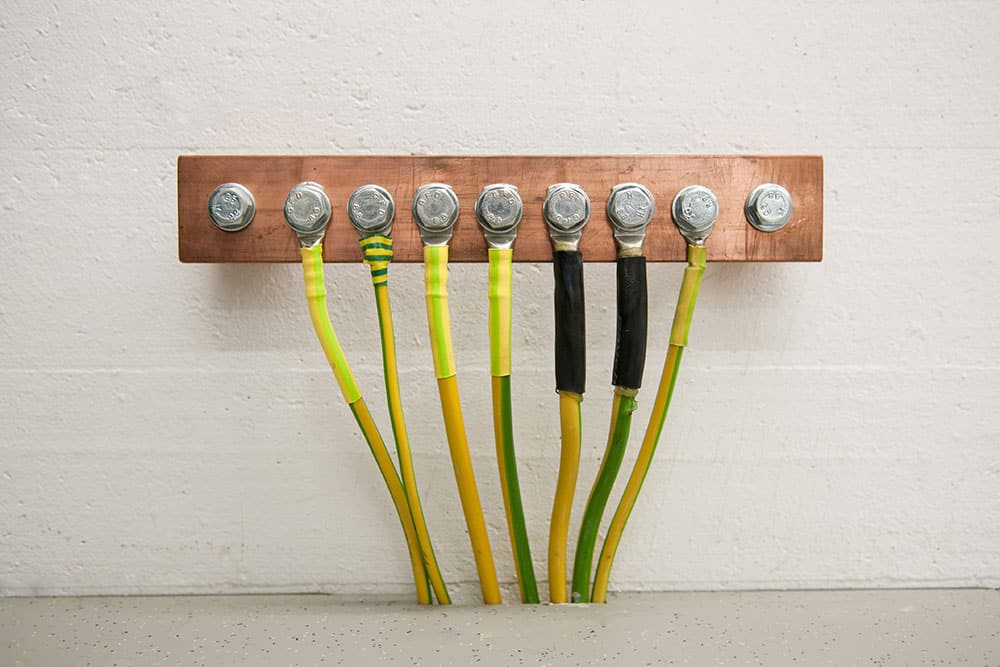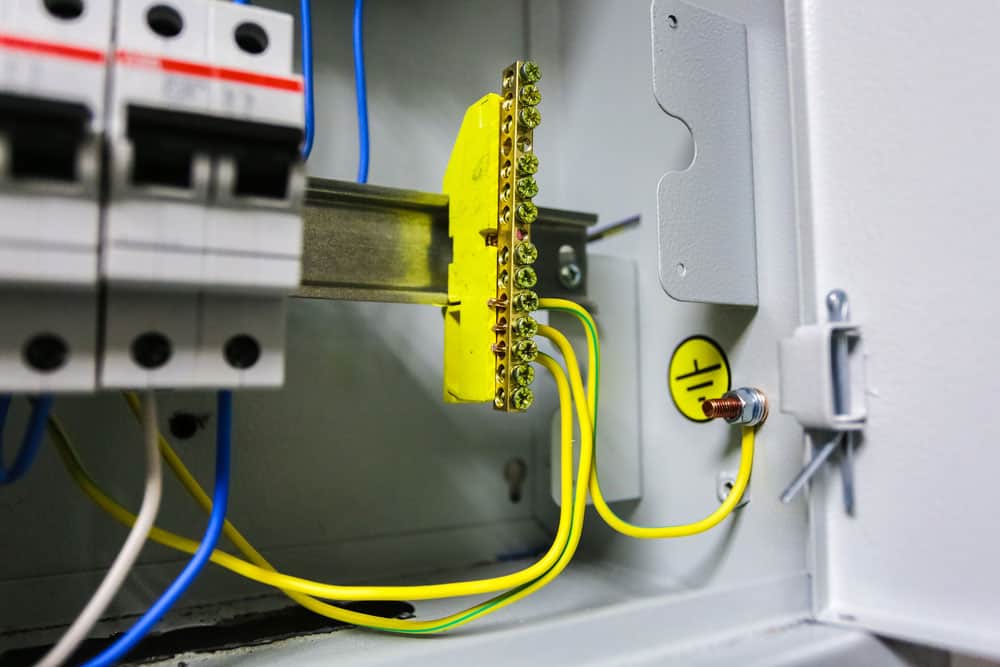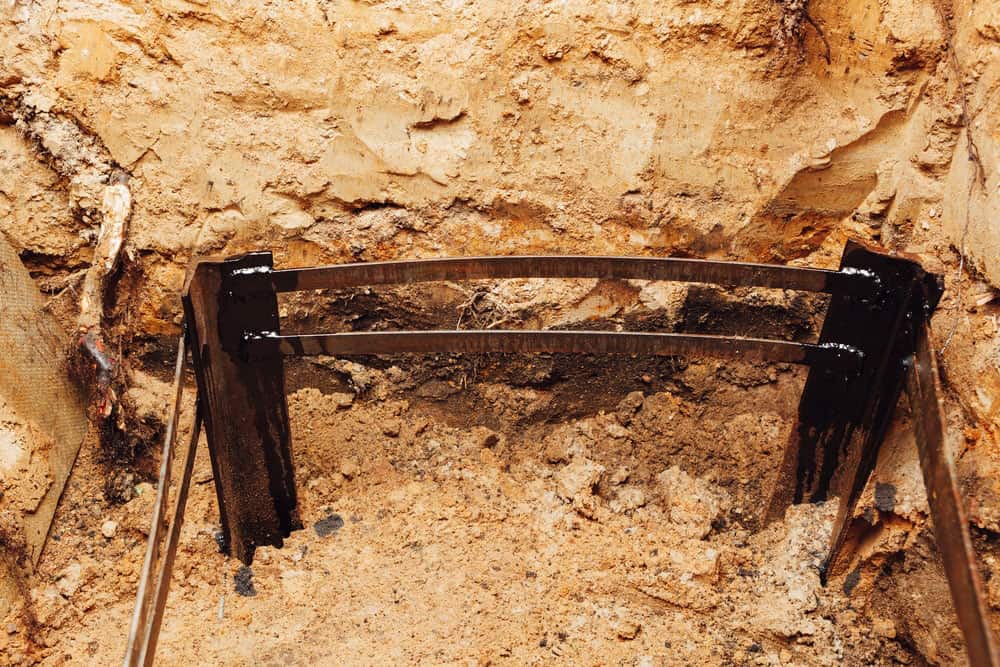A “grounded” electrical device is one that connects to a grounding system for safety reasons. Grounding finds a path that’s safe or offers the least resistance for stray voltage. It ensures the stray voltage doesn’t build up in a place where it could be dangerous. Instead, you divert it to the desired path where it can discharge safely. By discharging into the ground, it doesn’t endanger anyone. Overall, a grounding system is imperative for electrical safety. It’s a ground electrode setup with conductors put into the earth. Even if a massive power surge or lightning strike occurs, a proper grounding system design will protect your home.
Get Your Free Sample!
Explore our custom services now. Email us at [email protected] for more details.
The Importance of a Grounding System
Electrical grounding is a vital part of any installation, and you’ll find it at industrial properties, generation sites, and substations. Here are the benefits of a great electrical grounding design:
- Grounding can avoid voltage from reaching other conductive materials that could make it dangerous, such as water or metal. So, it’s imperative for personnel safety, and it reduces the risk of accidents.
- Additionally, grounding wires stop voltage from overloading and thus damaging your appliances, which helps them last longer and function better. So, it keeps electronic equipment safe and prevents potential issues.
- The risk of a ground fault current and the problems it causes are minimal. so, you can save money you’d spend on expensive repairs.

Caption: Electrical grounding in a server room
Get Your Free Sample!
Explore our custom services now. Email us at [email protected] for more details.
What Affects the Grounding System Performance?
Grounding study requires complex calculations. Therefore, only engineers should do it. They’ll focus on these factors:
- Soil characterization and its specifics
- The duration and magnitude of the ground fault current
- Shape and design of the grounding system
The design should cover all gear, including sensitive equipment. Many engineers use software to help them when calculating these variables.

Caption: Setting a ground wire system with a steel frame on a transmission pole
When Should You Do a Grounding System Study?
Did you install a new power setup? If yes, you must conduct a grounding study as soon as possible.
As for existing systems, here is when a study is necessary:
- You noticed something is off during maintenance. Did a wire corrode, or is something missing? Perhaps your measurements revealed a problem. Either way, getting a ground study can improve safety.
- Short circuit duty replacements. Did you add or replace a transmission line or transformer? Even if you only have a new circuit breaker, you’ll need a new study, too.
- Fence and gear changes. Did you move the fence to another position? Is your equipment in a new place or a new gear on the site?
- Missing documentation. If you don’t have info from the previous study, a new one can help to reduce the risk of issues.

Caption: Grounding terminals and wires in the industrial electrical control cubicle
Steps Included in the Grounding System Design & Planning
The basic principles of a grounding study start by checking the current limits that the system should handle. So, any voltage that can occur during a fault shouldn’t be a problem.
See how many safety grounding setups the property needs
Here is a table that the experts across the United States use:
- A building must have at least two groundings to prevent electric shocks and other problems. If the ground level is less than 250 feet, two setups at diagonal corners will do.
- If the property’s ground level is over 250 feet, the third grounding setup will be additional protection.
- Add another grounding setup per every 100 feet. So, if the ground level is 250-350 feet, you’ll have three. On the other hand, if it’s 351-450 feet, you’ll need four, etc.
Do you notice that metal covers the property? Make sure there is a complete lightning protection system. Additionally, check that the cables don’t have “v” or “u” pockets. They shouldn’t have sharp turns. Instead, place them down to the ground or horizontally. You might need a custom cable assembly to suit your needs.
Here are some other tips for maximum safety benefits:
- Never use aluminum below the ground. Additionally, don’t use it on copper surfaces, such as roofs.
- Don’t interconnect aluminum and copper conductors. The only exception is if you use bimetallic connectors.
- Don’t use copper conductors on aluminum surfaces, such as roofs. Additionally, don’t use it on bare galvanized steel.
Collecting Data
It includes geological and soil resistivity measurements. The experts often use the Wenner 4-point method because it’s accurate. You can use existing ground systems for extra data. Make sure to be thorough when collecting info. The more reliable data you gather, the better the final result will be.

Caption: Electrical yellow-green ground wires connected to the ground copper bar
Analyzing Data
Once you gather the available info, it’s time to analyze it. Most engineers use pro software to get a soil model. It will show the resistance of the soil in ohm-meters. Furthermore, it will specify the resistivity at many depths. Therefore, you’ll know where the most conductive soil is. That will make it easier to design a system in line with the expectations.
The resistivity can vary depending on the materials. Additionally, wetter surfaces will have higher resistance than dry ones. Minerals, temperature, and electrolytes also affect the resistivity rating.

Caption: Electricity grounding installation – the underground metal component
Grounding Design
Do you have all the measurements? Here is how to use a Nomogram to find the desired installation depth:
- Check the resistance you need on the R scale.
- Use the P scale to pick the soil resistivity.
- Grab a straightedge and create a line between the values above. The line should go through the K scale. Put a dot at the point where they intersect.
- Check the DIA scale and add a dot on the preferred hash mark of the rod diameter. From this dot, draw a line to the dot you marked on the K scale. Proceed until it crosses the D scale and put a dot. That’s the depth you need for the grounding system!

Caption: Installing a grounding system in an elevator shaft
Conclusion
The grounding system performance needs to be up to the standard. Each setup has goals, and the purpose of a study is to discover if it can meet them. After all, public safety is the top concern in the power industry. Do you have any questions about standards with guidelines on achieving optimal safety? Do you need cable assemblies for your grounding system design? If yes, don’t hesitate to contact Cloom today!
Hommer Zhao
Hommer Zhao serves as Director of Wiringo, leveraging a wealth of expertise in custom wire harness and cable assembly.
Drawing on more than a decade of hands-on expertise in the electronics field, Hommer focuses on wire harness manufacturing, custom cable assembly, and expedited restricted product production. His operations include a pair of wire harness production facilities and two dedicated PCB manufacturing & PCBA sites, all strategically located across Shijiazhuang, Shenzhen, Jiangmen, and the Philippines.
Hommer frequently refers to resources like Wiring Harness News for up-to-date insights and methods related to wire harness production.
Beyond his research and reading, Hommer also contributes to the Wiring Harness Manufacturer’s Association (WHMA), which offers invaluable resources and professional guidelines to wire harness specialists.
Get Your Free Sample!
Explore our custom services now. Email us at [email protected] for more details.



